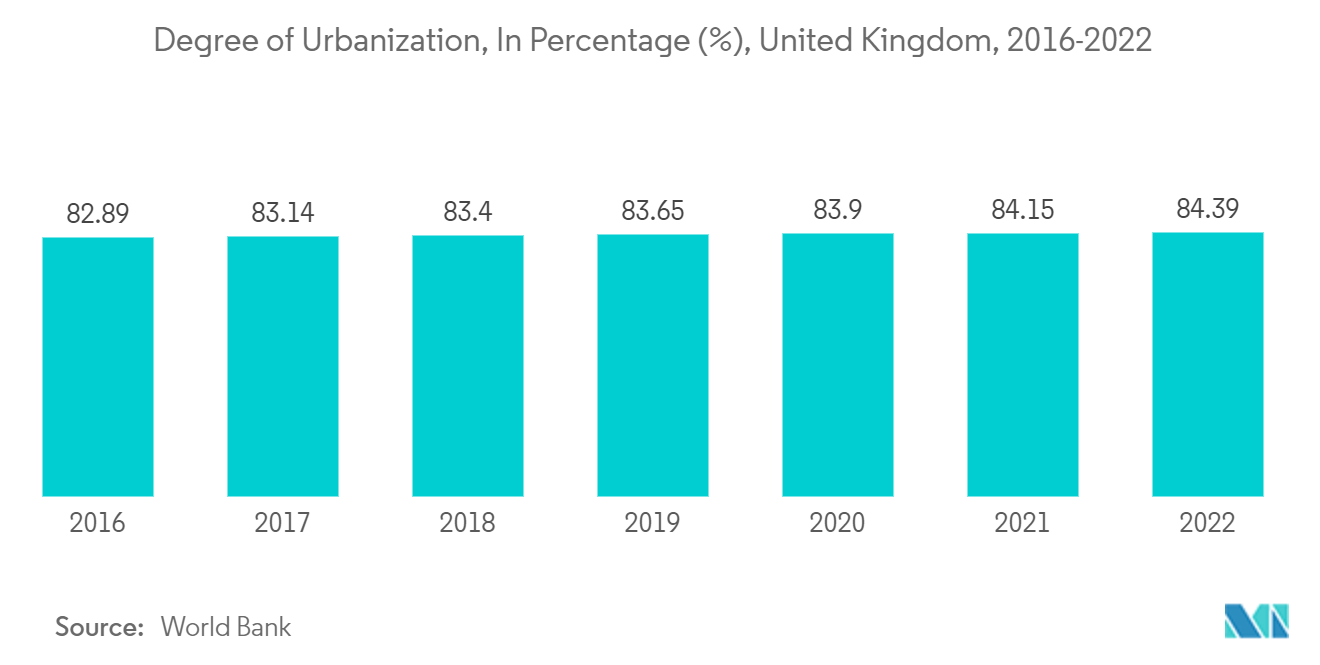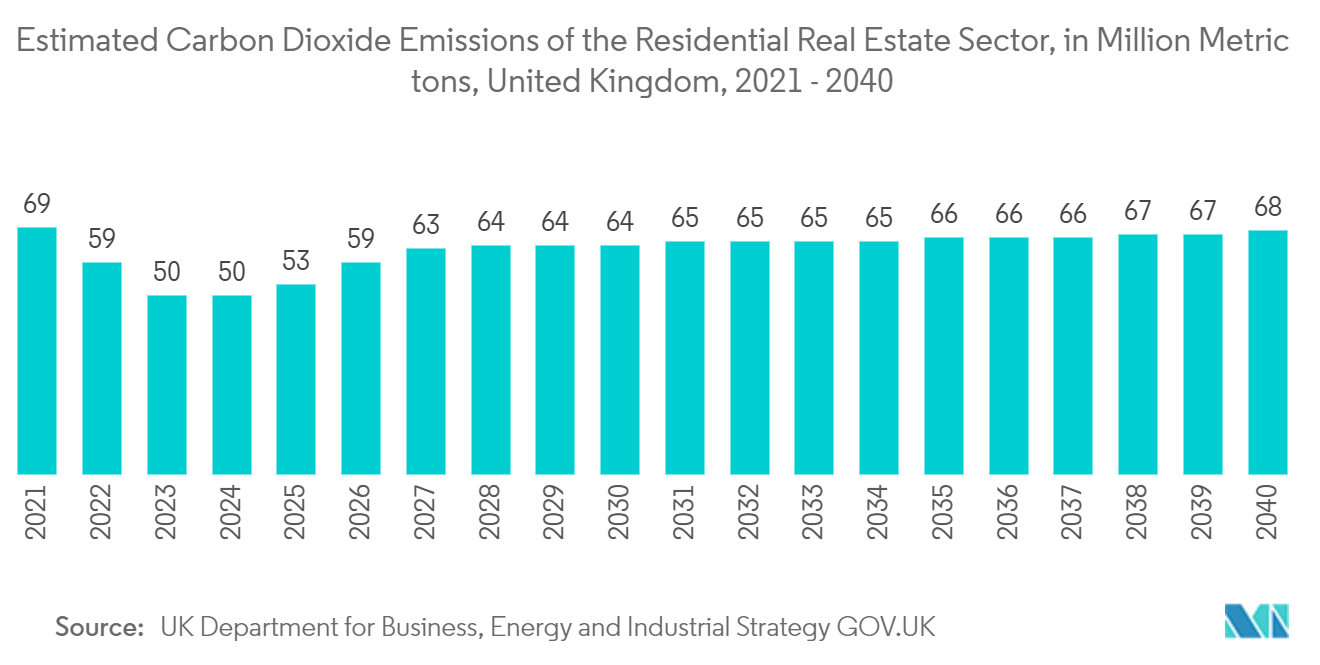Market Trends of UK District Heating Industry
Rising Urbanization and Industrialization to Drive the Market
- Rapid urbanization across the world, including in the UK, is driving the demand and pushing the switch to renewable energy sources for centralized heating & cooling, which can help reduce CO2 emissions, improve efficiency, increase urban energy needs, and provide cost-effective temperature control. For instance, driven by urbanization, the United Kingdom has rapidly increased its use of centralized systems in its northern regions.
- In the United Kingdom, urbanization amounted to 84.39% in 2022, as per the World Bank. This presents almost a three percentage point increase over the past decade. Though slow, the upward trend has been consistently positive, significantly influencing the market growth.
- Considering the prominence of cold weather conditions, the UK commands a prominent share of the global demand for DHC solutions, and a major share of the distribution network is situated in urban areas in the region. Large heat distribution infrastructures were developed during the second half of the 20th century in the region. These remain the principal ways to provide energy for space and water heating in urban areas.
- District energy systems benefit from and support this environment and are inherently appropriate to urban landscapes. The technology's synergy with the environmental conditions and the working population's needs are well suited for urban demographics. The growth of urban centers facilitates the construction of district networks. England, London, Wales, and Nottingham are some of the best examples in the market. In addition to requiring a particular scale of development, the high capital costs of heat networks demand energy services be delivered in the tightest space possible to maximize the number of end users. Thus, dense urban developments are highly suitable for distributed heat provision.

Residential and Domestic Segment Holds Significant Market Share
- Domestic heating accounts for nearly 14 percent of all emissions in the United Kingdom (according to the Institute for Government) and needs to be tackled urgently in line with the government's aim to meet its carbon reduction targets. District heating offers an effective solution for the supply of low-carbon heat to homes across the United Kingdom. While just over 2 percent of residences in the United Kingdom are currently connected to a district heating network (as per Energy Saving Trust), more are expected to come online as the country transitions to net zero over the coming decades.
- Most district heating systems currently installed in the United Kingdom use a gas-powered combined heat and power system (CHP), which generates electricity. A single CHP is usually more efficient in a housing estate or block of flats and requires less maintenance than a gas-powered boiler in every flat or house. The UK government's Committee for Climate Change (CCC) estimates that around 12 percent of domestic heat will be supplied by district heating by 2050.
- There are over 17,000 heat networks in place in the United Kingdom, and around half a million connections to them, most of them being domestic customers (as per Energy Saving Trust). They are perceived as a particularly attractive option in dense urban areas. They are an effective way of dealing with fuel poverty while reducing housing management costs.
- The establishment of heat networks, which can vary widely in size, implies that cheaper, lower-carbon sources of heat generation can be added over time without abrupt changes, such as digging up roads or changing people's homes. Hence, the growing efforts to reduce the carbon footprint of the residential sector will support the studied market's growth. For instance, according to sources like the UK Department for Business, Energy and Industrial Strategy, carbon dioxide emission from the residential real estate sector in the United Kingdom is anticipated to reach 68 million metric tons by 2040.
- Furthermore, the Future Homes Standard, expected to be introduced in the United Kingdom in 2025, requires carbon emissions produced by new homes to be around 75-80 percent lower than those built to current standards. Houses will have to be 'zero carbon ready,' with no retrofit work needed to benefit from the electricity grid's decarbonization and the heating's electrification. Fossil fuel heating may be banned in new houses, with an expected shift toward low-carbon heating technologies, such as heat networks.

